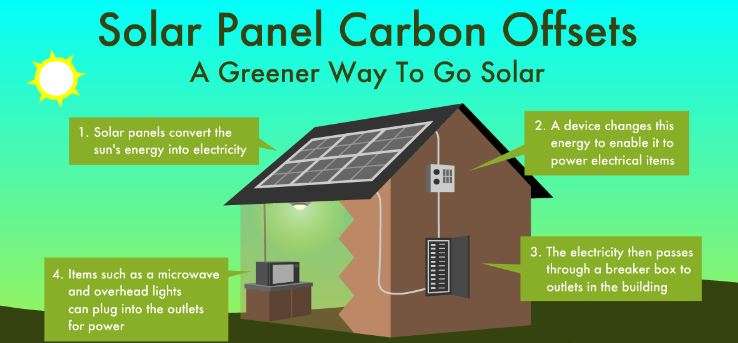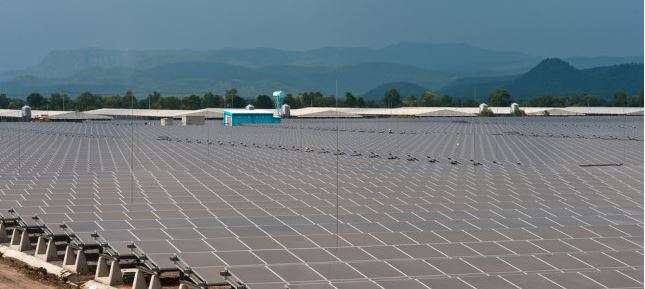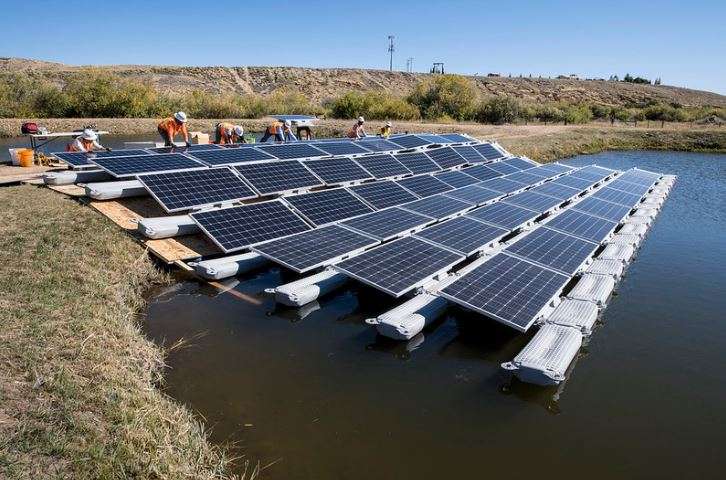Solar Energy’s Environmental Impacts
This article examines the various environmental effects of solar energy. We’ll talk about the negative and beneficial effects of solar electricity on a local and global basis.
Positive Environmental Impacts
While there are numerous negative environmental effects to consider, the majority of them are insignificant. We’ll now look at the environmental benefits that solar can provide.
Table of Contents
Carbon Offset/Reduction
One of the most important environmental benefits of solar energy is the carbon reduction it provides. We frequently refer to this as carbon offset, which refers to the practise of compensating for other people’s carbon emissions.

The use of solar panels to create electricity reduces the need to generate the same amount of power as previous techniques. Coal, oil, and gas power plants all emit considerable amounts of carbon into the environment. This occurs with the burning of fossil fuels, which most renewable energy solutions do not.
Using the sun as a source of energy for power production helps to lessen our carbon footprint. Solar has a far smaller impact on climate change than fossil fuel alternatives since it emits fewer carbon emissions.
Less Water Pollution
Traditional power plants require a variety of fluids for cooling. Power companies may release these fluids back into the environment depending on environmental regulations. When released directly into a river, this can damage the local water table and have far-reaching implications (or the sea).
Most solar panels, on the other hand, do not require such fluids and are thus more environmentally friendly. While certain solar thermal and concentrated solar collectors employ toxic fluids, the levels are frequently far lower than in a regular power plant. As a result, these fluids are easier to properly dispose of.
Nuclear power plants also emit large amounts of polluted water. This is primarily a byproduct of radioactive material storage. Fortunately, this type of trash frequently has stringent control systems in place to assist safeguard both the environment and people.
Converves Resources
Using the sun to create power aids in the conservation of the earth’s natural resources. Solar panels create power without the use of any solid fuel. They do not necessitate the extraction of minerals such as coal, oil, or gas. This reduction in mining requirements has significant environmental benefits.
Negative Environmental Impacts
Let us begin with the negative effects of solar energy on the environment.
Land Clearance
This effect is most noticeable in solar farms. When building such structures, construction workers must frequently clear enormous swaths of land. This procedure has the potential to have irreversible effects on the local environment.
It is well recognised that land clearing can result in soil erosion. This can lower the amount of nutrients in the soil, making future plant growth more difficult. Land clearing can also devastate habitats, displacing animals, some of which are endangered.

Clearing land can also contribute to global warming. This happens as a result of two factors. To begin, when construction workers clear vegetation, it is frequently burned or allowed to rot. Both of these processes emit greenhouse gases into the atmosphere (such as carbon dioxide and methane). Second, you should be aware that vegetation aids in the absorption of carbon dioxide and the release of oxygen back into the atmosphere. As we clear more land, we reduce the capacity for this process to occur. While this may seem insignificant on a local scale, when viewed globally, land removal becomes a serious issue.
It should be noted that the majority of home (and some business) solar energy systems are rooftop installations. Such installations make advantage of previously cleared land for construction purposes. As a result, the impact of land removal does not apply in this case.
Water Consumption
We frequently underestimate the influence that solar energy can have on water consumption. Solar panel owners and solar power businesses must clean their panels on a regular basis. This contributes to maximum efficiency and a higher return on investment. Dust and grime accumulate on top of solar cells over time, lowering the amount of sunlight that can penetrate the surface.
Most large-scale solar projects and practically all solar farms will have a cleaning irrigation system. Water is also required for cooling purposes in solar farms that use a concentrated solar collector. Cleaning solar cells can consume a substantial amount of water. The result is a decrease in the availability of fresh water. This may not be a concern in certain regions, but in arid areas such as deserts, it can become a serious issue.

Water consumption can have much greater environmental consequences. For additional insight, see this HuffPost piece on why wasting water is far worse for the environment than you might believe.
Toxic Materials
When we think of solar panels, we frequently think of them as being highly environmentally friendly. Most individuals are unaware of the environmental impact of the materials used to make them.
Although the materials used in solar panels vary by type and brand, the majority of them contain harmful elements somewhere in their design. Lead and cadmium are two examples of such elements found in manufacturing processes. While this isn’t a problem during the life of a solar cell, it becomes a problem when it dies. To minimise harmful materials draining into the earth, it is critical to properly dispose of a solar cell.
There is an extra hazardous concern to consider with solar thermal systems. A heat exchanger is frequently used in these systems. A heat transfer fluid is used to transport heat from a solar collector to a storage tank. While many non-toxic fluids are available, some are created with harmful ingredients. Some additionally include antifreeze chemicals such as propylene glycol.
Recap
You should now have a better knowledge of how solar energy affects the environment.
Land clearance is a major negative influence that can ruin habitats and kill flora. You must also consider water usage, which can have a big impact in areas where water is scarce. Solar energy, on the other hand, provides numerous advantages. These include assisting in the reduction of greenhouse gas emissions produced during energy generation. This not only serves to mitigate the effects of man-made climate change, but it also has the potential to improve the quality of the air we breathe.
While there are several consequences to consider, many people believe that solar Power energy is an environmentally friendly approach to generate electricity.